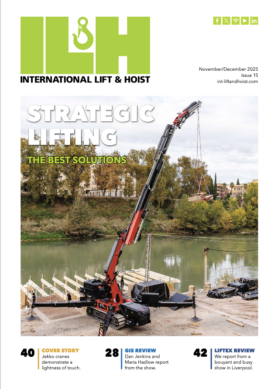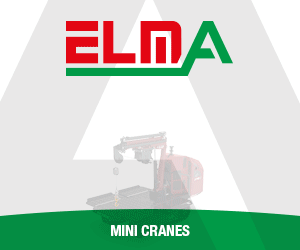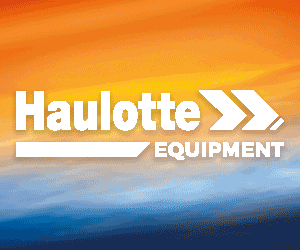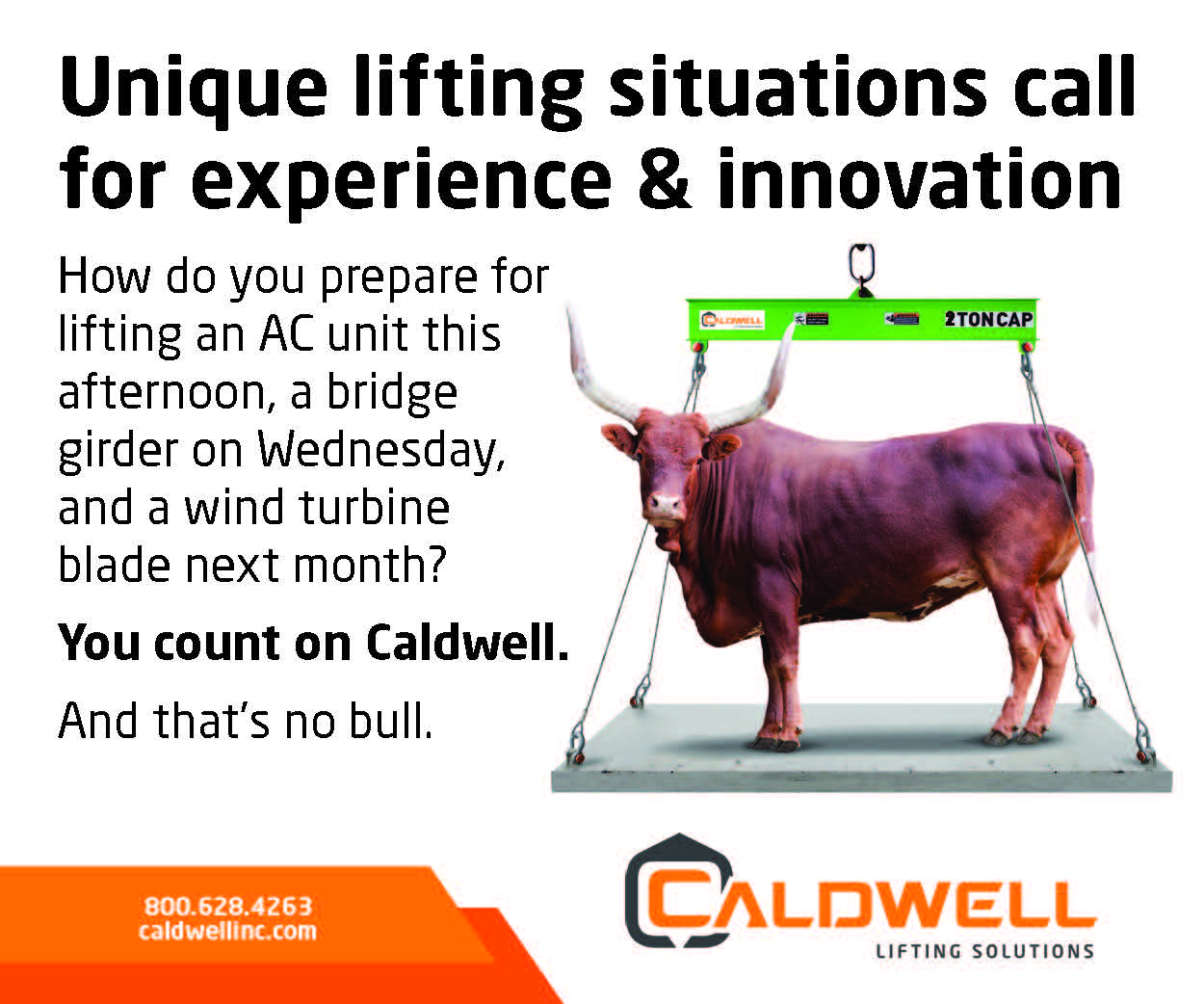)
The maintenance blind spot
When buildings, factories, and production lines are designed, the emphasis is on aesthetics, form, and function — not maintenance. That’s where material handling equipment often comes to the rescue, says Steve Napieralski, president at Oz Lifting.
I was talking to guests at the official opening of my company’s new facility here in Winona, Minnesota, earlier this month (October), when it struck me how much we can attribute our success to the architects and industrial facility planners that overlooked maintenance when sitting at their drawing boards. That’s not to say these professionals aren’t skilled and highly accomplished in their field – they are – but maintaining or replacing equipment isn’t their first thought.
Further, architects, structural engineers, plant designers, and maintenance managers often operate in silos. Without clear communication channels, maintenance needs, like clearance for motor removal or roof access for air-handling units, can simply fall through the cracks.
One local dignitary in attendance at the open day was quizzing me about our recent innovations, including the 250lb capacity parapet davit crane base, which is compatible with the XR Series 250 davit crane, and can be temporarily installed on rooftops without causing damage on installation or removal. Another visitor was in awe upon discovery that the Tele-Pro davit crane telescopes the boom in and out under load. Then I took another question about the Alumi-Lite davit, crafted from lightweight aerospace-grade aluminium, that offers durability without compromising on ease of transport.
In all instances, we’ve only been inspired to innovate because of the problems encountered at the point of use, and these issues often arise because architects and design engineers are typically focused on building usability, performance requirements, cost, and schedule constraints during construction. Nothing more. Nothing less.
Maintenance in its very nature falls into a separate lifecycle phase; unless someone deliberately integrates maintenance engineering input early on, access and lifting provisions can get missed. Designers might assume that maintenance will find a way later, which often proves impractical once equipment is installed. Unfortunately, this creates long-term cost and safety headaches, as maintenance teams have to work around physical limitations.
Shared struggles
One of our most vibrant markets today is the heating, ventilation, air conditioning, and refrigeration (HVACR) sector. It demonstrates the point perfectly. Nearly all of the products referenced above – and the other davit cranes, base styles, hoists, clamps, trolleys, and winches in our range – can be applied as a solution to a material handling problem encountered with pumps, motors, filters, conveyors, etc. But HVACR is just one example. Think of wastewater and water treatment; chemical and process industries; food and beverage processing; pharmaceutical and biotech facilities; utilities and energy; marine and offshore. The list is endless.
In all these sectors, we often find that there is insufficient lifting height for chain hoists or cranes; a lack of overhead beams or load-rated structures for lifting; and restricted access routes for maintenance tools or replacement parts. Even when a lifting solution is arrived at, a facilities manager isn’t allowed to fix a crane to a rooftop; or a lift planner raises concerns over a load being raised too close to a wall. Step up the parapet davit crane base; and the Tele-Pro davit crane with its telescoping boom.
We recently launched a wheel base that can be used with our full range of davit cranes up to 1200lb capacity. It is adjustable and has four different length positions. The base features a patented floor anchoring system, which allows the davit to rotate 360deg, even when under load. Demand for such a solution has steadily increased over the last few years. The base allows users to move the crane to various points within a facility; the applications are wide-ranging. The main benefit is that users do not have to permanently mount a base at the pick location.
It is yet another representation of material handling equipment as an overlooked workhorse or critical support service to some of the world’s most demanding industries. Every building, plant, or facility depends on safe and efficient material handling, whether for routine maintenance, repair work, or infrastructure upgrades. While overhead cranes and hoists sometimes take the spotlight in heavy industry, products like davit cranes quietly provide versatile lifting solutions in tight or awkward spaces, especially where permanent lifting systems aren’t viable.
Despite the fact that so many revenue streams are opened to my company through a distributor network that proves its responsiveness and technical competence every day, we must all continue to do more to raise the profile of our lifting and rigging solutions, especially the unsung heroes above and below-the-hook – high in the sky and deep in tunnels underground.
Under pressure
I was on the 80th floor of a building in downtown Chicago not that long ago. The facilities manager took me to a room where the plant equipment was housed. It looked shiny and well installed but, as my contact bemoaned, there was no room for an overhead crane installation, and he had no way of maintaining any of the components. Removing items for inspection and maintenance was proving impossible. Ok, we had the solutions to help, but why did it get to this stage?
Interestingly, the problem for building and plant managers is being compounded in that, while end-user markets show no sign of thinking about maintenance — or the material handling equipment needed to perform it — at the point of conception, they are evolving in other ways. A good example is in the weight restrictions placed on manual handling from an ergonomics standpoint.
While there’s no single global limit that all companies use, large industrial employers such as John Deere, Caterpillar, Hitachi, or Siemens typically adopt conservative manual handling weight limits based on ergonomics and safety standards, often aligning with national guidance. In other words, if you’re working at one of these firms, manual lifting by a single worker might be limited to approximately 55lb under ideal conditions (close to the body, at waist height, with good posture). Once again, that means that trends are being driven towards innovative material handling solutions.
The open house event I referenced at the start of this article presented an opportunity to reflect – and one of our landmark innovations highlights the pain points encountered on site. I remember two decades ago, it was apparent to me that most people didn’t know the weight of the load they were lifting, especially when using lever hoists. Either the load moved, or the hook opened up, and it was dropped. With a product that can be easily misused (you must never use, say, a length of pipe as an improvised extension to the handle), this was extremely dangerous. We changed this by adding overload protection. Our premium lever hoist features this industry-changing standard overload protection, set at approximately 150% of the rated load, ensuring reliable performance in every lift.
In an era defined by Industry 4.0, staying aligned with evolving trends and delivering practical, problem-solving solutions is vital for survival. Companies that anticipate challenges, streamline maintenance, and offer adaptable lifting and handling solutions maintain a competitive edge – ensuring operations remain safe, efficient, and resilient in an increasingly challenging industrial landscape.











